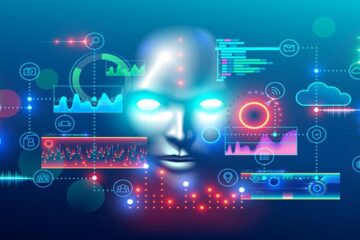Table of Contents
Innovations in Interpreter Services
In a world where information knows no boundaries and communication has become the key to success, access to language and interpretation services is essential for people all over the world. The ability to communicate and understand one another across language barriers is a powerful tool that can help build bridges between different cultures and countries.

As technology advances, new methods of interpreting have emerged, allowing for more efficient and accurate language access than ever before. In this blog post, we’ll explore the various innovations in interpreter services and the ways they are enhancing language access for everyone.
We’ll look at the latest developments in technologies such as machine translation, speech recognition, neural networks, and natural language processing, and discuss how they can help bridge the language barrier and provide greater access to communication.
We’ll also discuss the potential ethical implications of these advancements and the importance of accurate interpretation in legal and medical contexts. Finally, we’ll examine the various opportunities that have been created by these technological advancements and the potential impact they could have on the future.
Introduction of Remote Interpreting Services
Remote interpreting services are a modern and revolutionary way to bridge language barriers. Growing demand for interpreting services has led to the development of remote interpreting technologies that enable interpreters to connect with people from all corners of the world. With remote interpreting, interpreters are able to provide on-demand language services from the comfort of their own homes, which offers a great deal of convenience for both the interpreter and the client.
Remote interpreting is cost-effective and provides greater access to language services than ever before. It is a great option for businesses, organizations, and individuals looking to expand their language access and provide quality interpretation services in multiple languages.
Utilization of Machine Learning to Automate Interpreting
The utilization of machine learning to automate interpreting is becoming increasingly popular in interpreter services.Filipino translators are proficient in converting text and speech from one language to another, ensuring accuracy and cultural relevance in their work.
This innovative approach brings a number of benefits, such as increased accuracy and reliability, improved cost-efficiency, and enhanced scalability.
Through artificial intelligence (AI) technologies, such as natural language processing, deep learning algorithms are used to simulate the interpretation process and transcribe dialogue in real time to a target language.
AI-powered interpreting machines can quickly and accurately detect and process the nuances of the source language, and provide accurate, timely translations of the spoken words.
Utilization of AI-Driven Interpreting Platforms
AI-driven interpreting platforms have the potential to revolutionize the field of interpreter services. With such platforms, interpreters are able to quickly interpret spoken or written content in real-time, allowing for better communication between those who speak different languages. Not only do these platforms provide faster, more accurate interpretations, but they also save time and money.
AI-driven interpreting platforms are particularly helpful in cases where interpreters are not immediately available. As such, they provide a crucial service to those who are in need of fast, accurate language interpretation.
Integration of Interpreting into Smart Devices
The integration of interpreter services into smart devices has opened up new opportunities for language access.
Smartphones, tablets, and other devices can now be enabled with the ability to connect users with remote interpreters, providing access to real-time interpreting services on any device.
This integration allows users to access interpreters when needed, without the need for physical interpreters to be present. It also provides a cost-effective solution, as devices that are already owned can be enabled.
Smart device integration of interpreter services can also be used to provide access to healthcare services, digital classrooms, and other applications that require language access.
Creation of Interpreting Tools to Support Deaf and Hard of Hearing Communities
Interpreting tools have the potential to revolutionize language access for deaf and hard-of-hearing communities.
By using AI-based technologies, natural language processing, and speech recognition, these tools can provide real-time, accurate translation of spoken words into signed languages, making communication seamless, as well as providing more opportunities for meaningful connections.
Furthermore, these tools can be used to create multimedia materials such as cartoons, videos, and audio recordings, which can help bridge the communication gap between sign language and spoken English.
The creation of interpreting tools to support deaf and hard-of-hearing communities is a major innovation in interpreter services that promise to improve language access for all.



